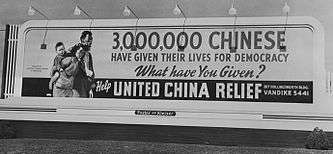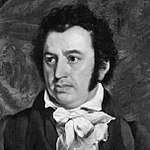Bettis Garside
Bettis Alston Garside (November 22, 1894 - August 1, 1989), better known during his life as B. A. Garside, was an author, an executive for several philanthropic organizations focused on China, and an educator.[1]
Early life
Garside was born in Stringtown, Oklahoma and spent most of his early life in the state, receiving his bachelor's degree from the University of Oklahoma. After service in the U.S. Navy during World War I, Garside served as the Stringtown high school principal and then received his master's degree from Columbia University in 1922.[2]
Life in China
In 1922, Garside left on a Presbyterian mission to China. He studied Mandarin until 1923, when he became an education professor at Cheeloo University in Jinan. He served in that role until 1926.[2]
Work on Chinese education
From 1927-1932, Garside served as secretary of the China Union Universities office in New York City.[2] In his first year in the post, Garside helped eleven Christian colleges in China reopen after they had shut due to political turmoil within the Kuomintang (KMT). Earlier that year, Communist influence in the KMT created conditions leading to shutting of several of the institutions.[3]
In October 1932, a new organization, the Associated Boards for Christian Colleges of China (ABCCC) was formed to focus on the interests of Christian colleges in China.[4] Garside served as Executive Secretary of the new organization, a position he held until 1941.[2] At the ABCCC, Garside took upon the role of promoting information about the colleges, which in the 1932-1933 academic year had combined enrollments of 5,400 students and endowments of US$12 million.[4]
In 1935, Garside received an honorary Doctor of Humane Letters degree from College of the Ozarks.[2]
By the time of the start of the Second Sino-Japanese War in 1937, 11 of the 12 member institutions of the ABCCC were in the war zone. Garside spoke widely to encourage the American public to boycott Japanese goods to help stop the war, which had prompted several of the colleges to relocate.[5] Later in the war, in 1940, Garside led fundraising efforts for the members of the ABCCC, which had then grown to 13 colleges. In that year, over 7,700 students attended the schools, several of which had moved because of the conflict. Garside spearheaded a campaign to raise US$250,000 for the schools.[6]
Chinese relief efforts

In March 1941, the ABCCC became part of United China Relief, a new organization which brought together several different philanthropic organizations operating in China. Other organizations joining United China Relief included the American Bureau for Medical Aid to China, the China Emergency Relief Committee, the American Committee for Chinese War Orphans, the Church Committee for China Relief, the American Committee for Chinese Industrial Cooperatives, and the China Aid Council. The new board for this organization included Pearl Buck, William Bullitt, Henry Luce, Robert Sproul, Wendell Willkie, John D. Rockefeller III, Theodore Roosevelt Jr., David O. Selznick, and Thomas Lamont. Eleanor Roosevelt served as honorary chairman. This board chose Garside as the executive director, and he set out to raise the money needed to help the refugees from the war.[7]
United China Relief was the largest philanthropic effort to aid the Chinese people up to that time. This organization, which later became known as United Service to China, raised over US$50 million in donations.[1] Garside's skill in fundraising was shown by the receipt of over $500,000 by June 1941, a mere three months after the launch of the original campaign seeking $5,000,000.[8] From 1941-1967, Garside served in various executive capacities with both organizations.[2]
In 1959, Garside and Lowell Thomas organized the American Emergency Committee for Tibetan Refugees.[1] Garside served on this committee until 1970.[2]
Garside was a strong supporter of Nationalist China, serving on the Committee for Free China and One Million Against Admission of Communist China to the UN. Garside received the Order of Brilliant Star and the Order of Auspicious Clouds from the Republic of China.[2]
Published works
Garside wrote two books, both non-fiction. The first, published in 1948, was One Increasing Purpose: The Life of Henry Winters Luce, about the missionary father of Time publisher Henry Luce. The second was his memoirs, Within the Four Seas, published in 1985.[2]
Personal life
On September 21, 1921, Garside married Margaret Cameron. They later had one daughter, Jean. Garside's wife died in 1981.[2]
References
- "Bettis A. Garside, 94, Relief Agencies' Head". The New York Times. 1989-08-02. pp. D22.
- Marquis Who's Who. 2006.
- "Our Missions Reopen 11 of 16 China Colleges". New York Times. December 20, 1927.
- "Colleges in China Held Prospering". New York Times. July 5, 1933.
- "Colleges in China Open". New York Times. October 10, 1937.
- "Liberty and Education". Time. November 4, 1940.
- "$5,000,000 Sought For China Relief". New York Times. March 3, 1941. pp. 1, 6.
- "China Fund Tops $500,000". New York Times. June 8, 1941. p. 19.
- Garside, B.A. (1985). Within The Four Seas. New York: Frederic C. Beil. ISBN 0-913720-58-5.
